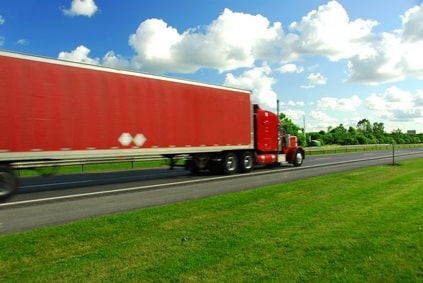Building a trailer that is safe, complies with stringent government regulations, and comes at a competitive price point is important, but one design factor that should never be overlooked is a streamlined body. It can be a trying feat, but achieving such a sleek structure generates plenty of more pros than cons – especially when it comes to speed and efficiency. According to data compiled by FleetOwner, sharply-constructed, aerodynamic trailers could reduce the drag coefficient by a staggering 20%.
Whether you’re a truck trailer manufacturer or you simply run a sluggish fleet, it’s time that you get the full story on the simple components and adjustments that constitute an aerodynamic trailer. Let’s take a look at 5 tips to put into practice:

When a trailer is attached to a truck, a gap is created. Of course, that gap is necessary as it provides the driver more leverage when turning, but it also has a tendency of trapping quite a lot of air. When this happens, resistance is created, something that can slow down the entire vehicle.
To combat this, you must focus on engineering the sleekest possible side panels. Trailer manufacturer, Nussbaum, has managed to do this by designing 20-inch side panels that protrude into the gap between the truck and the trailer. These simple additions may not look like a whole lot, but they do a good job of effectively diverting air past the gap, which, in turn, reduces wind resistance.
Another “dead zone” that can make truck trailers less efficient is the entire area between the trailer’s underbelly and the road below. The faster the vehicle goes, the more air gets sucked under the bottom, resulting in drag which can slow down and put more pressure on the truck.
The most common way to streamline this part of the truck trailer is to think about trailer skirts strategically. Now, there isn’t a one-size-fits-all solution or a quick fix, but the products do a great job of hindering air flow when they are customized for the specific rig. Research released by Truck News shows that well-placed skirts have been scientifically-proven to save fuel, but the publication does stress that skirt-fitting can be tricky and most likely only leads to success when performed by a specialist.
Trailer tails aren’t just a trend; the popularity is only growing, and for good reason – adding tails can help improve a vehicle’s fuel efficiency by a staggering 5 to 15%. Like skirts, real tail fairings are designed to redirect airflow so that there is a less of a drag effect as the truck moves forward.
What’s great about the tails is that the truck’s driver can quickly and easily deploy them in just seconds. These accessories only provide significant assist when the vehicle is maintaining a consistent speed (i.e., highway driving), so the simple, convertible option is a big plus.

According to the experts at the Alternative Fuels Data Center, installing low-resistance tires on a heavy-duty vehicle, like a truck and/or trailer combo, can help improve fuel economy by a whopping 10%.
Low-resistance tires are specially designed with a very important objective: to decrease the tires’ rolling resistance. Rolling resistance is the dragging sensation that occurs when the friction from the surface of the tire rubs against the road. This motion can really slow a trailer down, which is why operators and manufacturers of tractor trailers are making the low-resistance tire investment before the rig ever hits the road.
One of the best ways to guarantee that your trailer is as sleek, efficient, and aerodynamic as possible is to invest in specialized devices. New accessories that cut down on air flow, resistance, and other gas-guzzling tendencies hit the market routinely, so it’s not difficult to find a great deal in this competitive landscape.
Once you’ve found the aerodynamic devices that work well for you, install and uninstall them on your trailer as needed. One of the benefits here is that the accessories can be used in such a way that they adhere to your current needs. To determine yours, take the size and regular weight loads (or the GVWR) of your trailer and axle, as well as the particulars of the regular driving routes, and compare them to the hard data provided by the seller.
It’s not difficult or even expensive to create or customize an aerodynamic trailer. To build a more aerodynamic trailer, simply do your best to cut down air flow, unnecessary resistance, and, of course, never skimp on accessories that might save you thousands on fuel in the long-run.
Our sales engineers are experts in automatic asset tracking, tagging and identification,a nd can answer all your questions. Get in touch now.
Lets Talk ›